pleasse i need someone to assit me with my assighnment.
q1. Examine the code below and Draw the stack frame after analysing the assembly code when function1, function2 and function3 are called by the main program for a 32-bit system. Figure 2 shows a sample stack frame of a function.
#include <string.h>
#include <stdio.h>
#include <stdlib.h>
int function1(int x, int y, int z)
{
int result_func1;
result_func1 = x + y + z;
return result_func1;
}
int function2(int x, int y, char* input_string)
{
int result_func2;
char buffer[20];
strcpy(buffer, input_string);
printf("your input string %s is copied in the buffer \n", input_string);
result_func2= x - y;
return result_func2;
}
void function3(int result1, int result2)
{
printf("The result of function 1 is %d\n", result1);
printf("The result of function 1 is %d\n", result1);
}
void function4(void)
{
printf("The function never gets called is \n");
exit(-1);
}
int main(int argc, char* argv[])
{
int result1;
int result2;
result1 = function1(5, 10, 15);
result2 = function2(20, 8, argv[1]);
function3(result1, result1);
}
assembly code of the after the analysis:
0x00005555555552c0 <+0>: endbr64
0x00005555555552c4 <+4>: push %rbp
0x00005555555552c5 <+5>: mov %rsp,%rbp
0x00005555555552c8 <+8>: sub $0x20,%rsp
0x00005555555552cc <+12>: mov %edi,-0x14(%rbp)
0x00005555555552cf <+15>: mov %rsi,-0x20(%rbp)
0x00005555555552d3 <+19>: mov $0xf,%edx
0x00005555555552d8 <+24>: mov $0xa,%esi
0x00005555555552dd <+29>: mov $0x5,%edi
0x00005555555552e2 <+34>: callq 0x5555555551c9 <function1>
0x00005555555552e7 <+39>: mov %eax,-0x8(%rbp)
0x00005555555552ea <+42>: mov -0x20(%rbp),%rax
0x00005555555552ee <+46>: add $0x8,%rax
0x00005555555552f2 <+50>: mov (%rax),%rax
0x00005555555552f5 <+53>: mov %rax,%rdx
0x00005555555552f8 <+56>: mov $0x8,%esi
0x00005555555552fd <+61>: mov $0x14,%edi
0x0000555555555302 <+66>: callq 0x5555555551ef <function2>
0x0000555555555307 <+71>: mov %eax,-0x4(%rbp)
0x000055555555530a <+74>: mov -0x8(%rbp),%edx
0x000055555555530d <+77>: mov -0x8(%rbp),%eax
0x0000555555555310 <+80>: mov %edx,%esi
0x0000555555555312 <+82>: mov %eax,%edi
0x0000555555555314 <+84>: callq 0x555555555261 <function3>
0x0000555555555319 <+89>: mov $0x0,%eax
0x000055555555531e <+94>: leaveq
0x000055555555531f <+95>: retq
modidied(actual 32bit assembly code)
function1:
push ebp
mov ebp, esp
mov eax, DWORD PTR [ebp+12]
add eax, DWORD PTR [ebp+8]
add eax, DWORD PTR [ebp+16]
pop ebp
ret
.LC0:
.string "your input string %s is copied in the buffer \n"
function2:
push ebp
mov ebp, esp
push ebx
lea eax, [ebp-28]
sub esp, 44
mov ebx, DWORD PTR [ebp+16]
push ebx
push eax
call strcpy
pop eax
pop edx
push ebx
push OFFSET FLAT:.LC0
call printf
mov eax, DWORD PTR [ebp+8]
mov ebx, DWORD PTR [ebp-4]
sub eax, DWORD PTR [ebp+12]
leave
ret
.LC1:
.string "The result of function 1 is %d\n"
function3:
push ebp
mov ebp, esp
push ebx
sub esp, 12
mov ebx, DWORD PTR [ebp+8]
push ebx
push OFFSET FLAT:.LC1
call printf
mov DWORD PTR [ebp+12], ebx
add esp, 16
mov ebx, DWORD PTR [ebp-4]
mov DWORD PTR [ebp+8], OFFSET FLAT:.LC1
leave
jmp printf
.LC2:
.string "The function never gets called is "
function4:
push ebp
mov ebp, esp
sub esp, 20
push OFFSET FLAT:.LC2
call puts
mov DWORD PTR [esp], -1
call exit
main:
lea ecx, [esp+4]
and esp, -16
push DWORD PTR [ecx-4]
push ebp
mov ebp, esp
push ecx
sub esp, 8
mov eax, DWORD PTR [ecx+4]
push DWORD PTR [eax+4]
push 8
push 20
call function2
pop edx
pop ecx
push 30
push 30
call function3
mov ecx, DWORD PTR [ebp-4]
xor eax, eax
leave
lea esp, [ecx-4]
ret
please i need someone who can assist me with who to start
